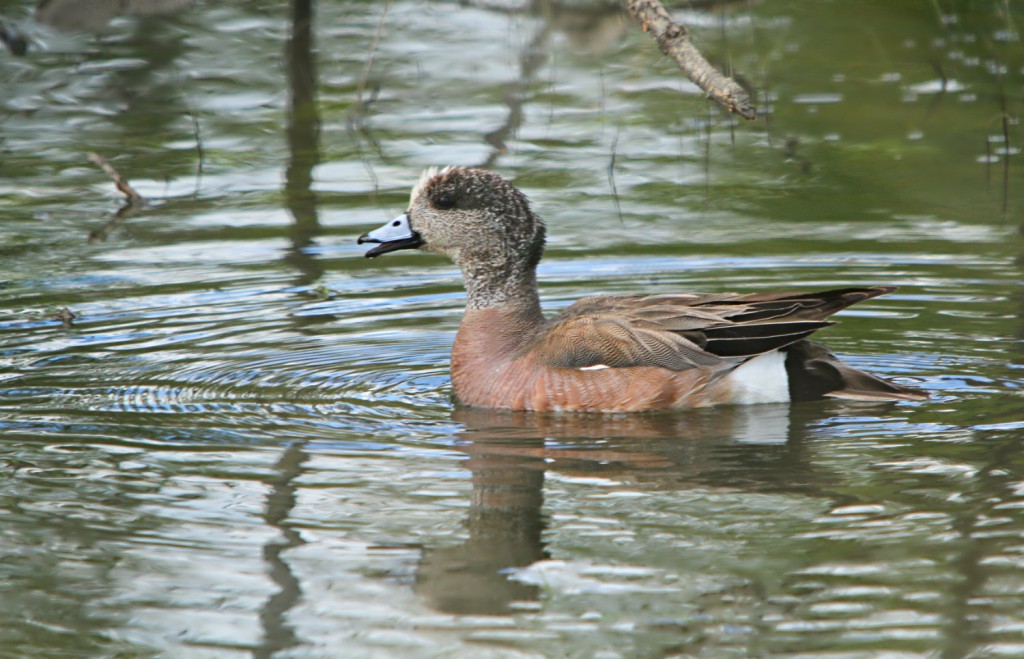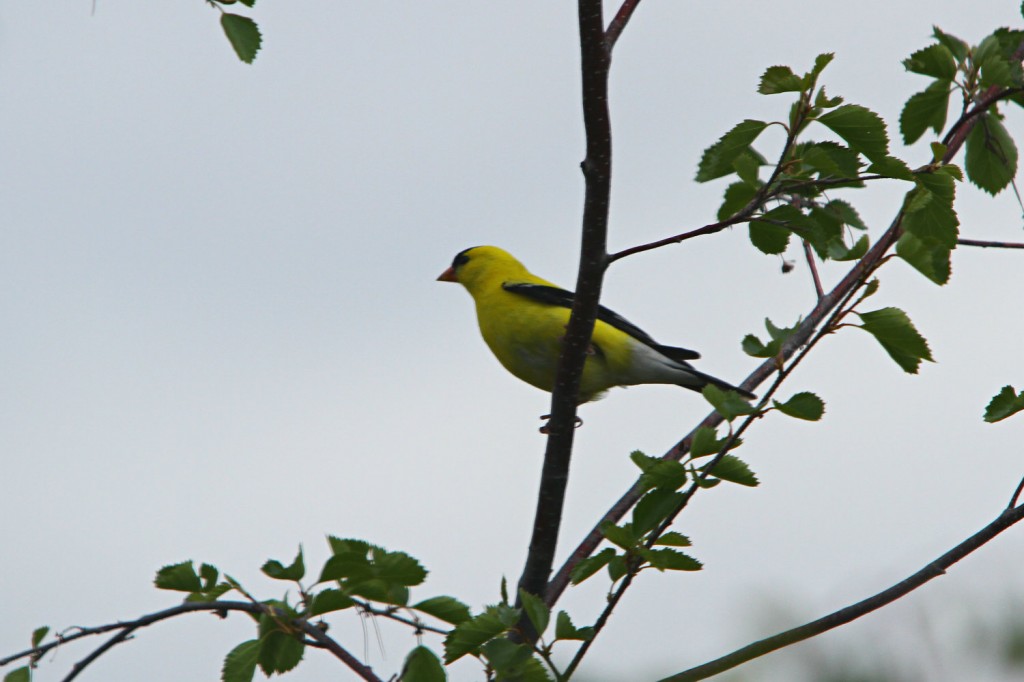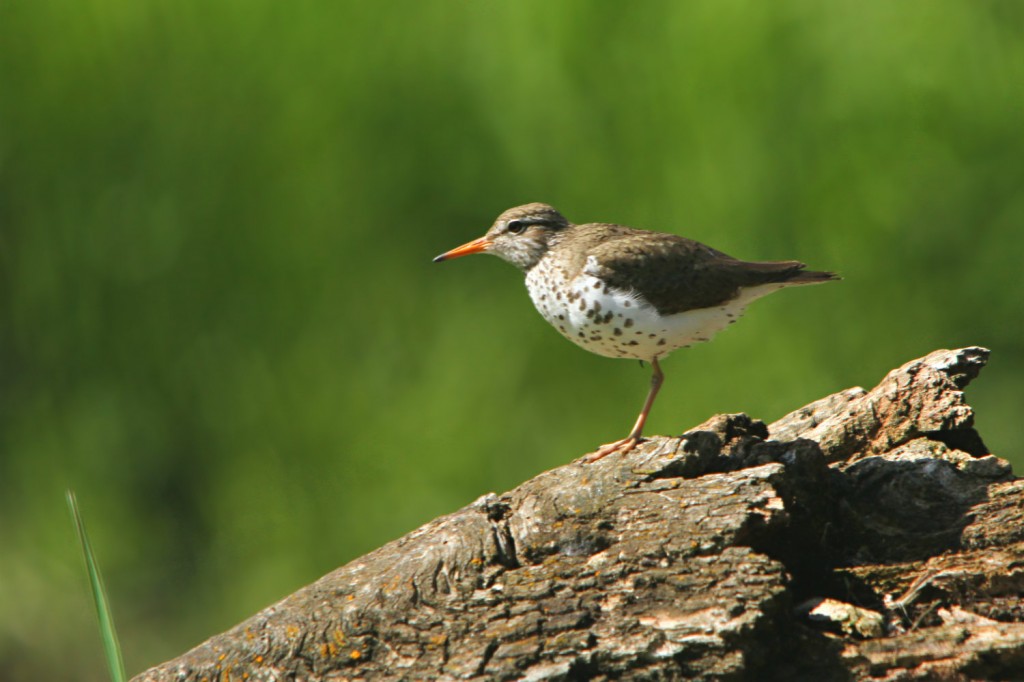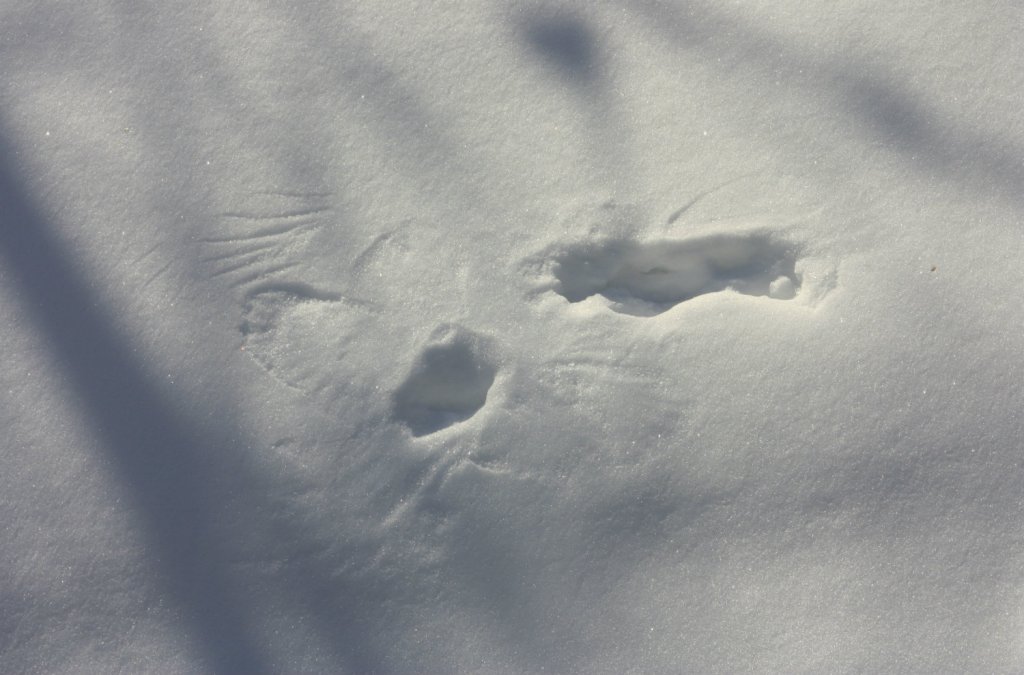Posted by Matthew Sim
So how many species of birds can you find in a single day in Fish Creek P.P.? Last year, I set out to find the answer. I turned up 93 species, 7 short of my goal of 100. This year, I was back out again, trying my luck once more. Once again though, I fell short, managing to find a total of 89 species for the day.
I won’t write up too much here or I could have several pages of notes but I will point out some of the highlights, and of course, low points. Surprising this year was the lack of quite a few species that should have been easy to find. Notably, Osprey, Belted Kingfisher, Ruddy Duck, Tennessee Warbler, Forster’s Tern, Black Tern and Pied-billed Grebe were missing. Some of these were absent due to the (until quite recently), low water levels at the Lafarge Meadows sloughs. I had wondered why there were few birds at the sloughs and Dan helped me out by pointing out the fact that the sloughs had been quite low for the last few weeks, perhaps turning away some species.
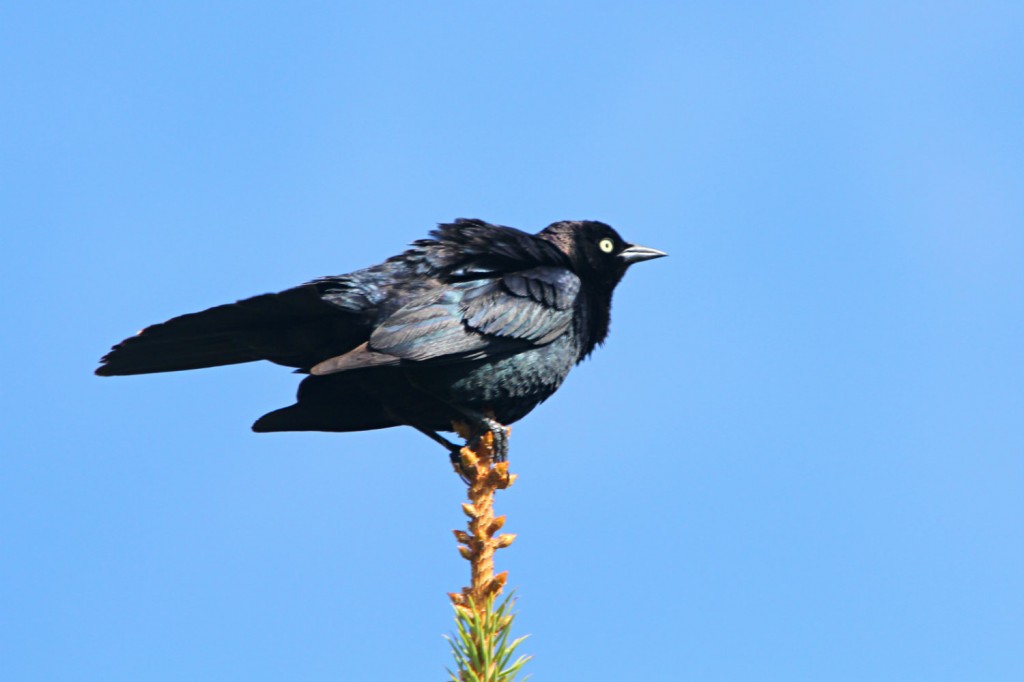
While I did have some surprising misses, I also found some good species, including the Brewer’s Blackbird above.
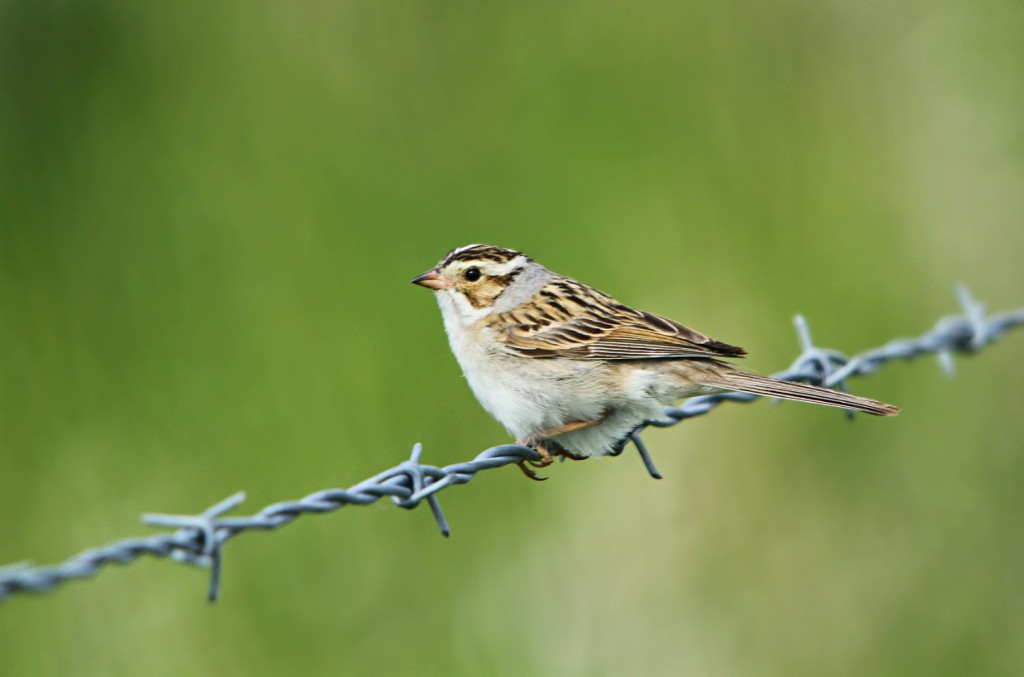
Although some of the common species such as Osprey were absent, most, including the Clay-colored Sparrow above and the American Goldfinch below were relatively easy to find.
Then there were some species that I missed last year but were easy to find this year. I could not find any LeConte’s Sparrows last year but this year I managed to find nearly a dozen. This little guy posed nicely for a few minutes near the Ranch.
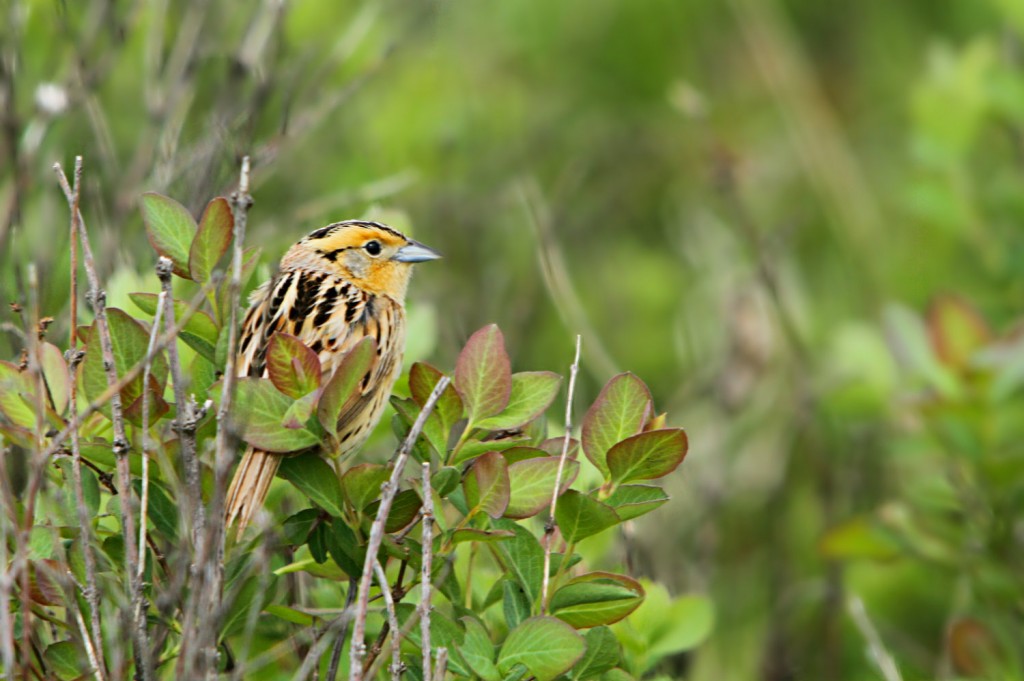
Perhaps I forgot to mention too that it was an early start? I was at the park just before 5, when the songsters were just getting started.
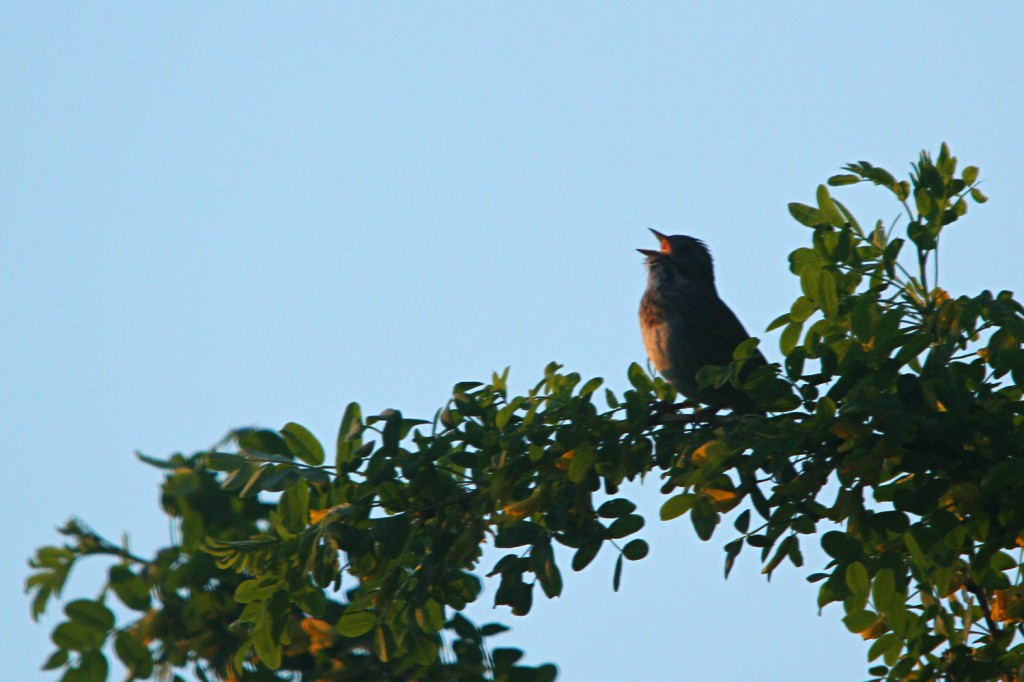
Lincoln’s Sparrow
One of the many birds to be singing early on was the Red-eyed Vireo. These little birds sing nice and loud but can be very tricky to spot. Luckily for me, this one Red-eyed Vireo below sang right from the top of a poplar. So although he was easy to see, he was still a long way up!
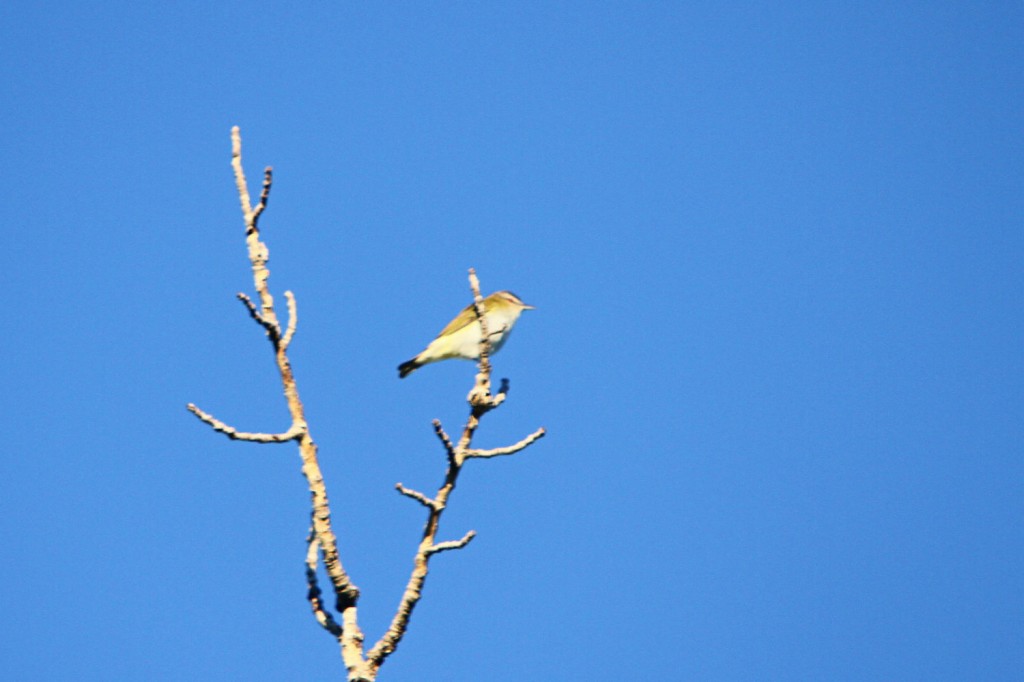
It was a good day and I’m looking forward to doing it again next year. I guess then it will have become the 3rd Annual Fish Creek Big Day…
